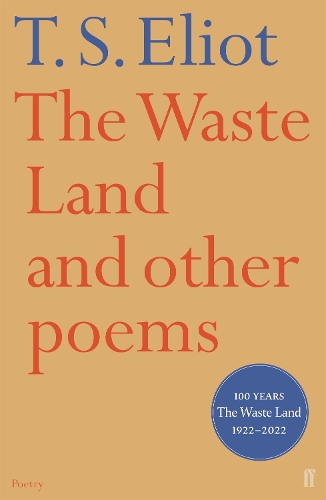
The Waste Land and Other Poems
(Paperback, Main)
Publishing Details
The Waste Land and Other Poems
By (Author) T. S. Eliot
Faber & Faber
Faber & Faber
1st July 2005
2nd January 2002
Main
United Kingdom
Classifications
Primary and Secondary Educational
Non Fiction
821.912
Physical Properties
Paperback
96
Width 130mm, Height 198mm, Spine 8mm
120g
Description
April is the cruellest month, breeding
Lilacs out of the dead land, mixing
Memory and desire, stirring
Dull roots with spring rain . . .
Published in 1922, The Waste Land was the most revolutionary poem of its time, offering a devastating vision of modern civilisation which has lost none of its power today.
Author Bio
Thomas Stearns Eliot was born in St Louis, Missouri in 1888. He was educated at Harvard, at the Sorbonne in Paris, and at Merton College, Oxford. His early poetry was profoundly influenced by the French symbolists, especially Baudelaire and Laforgue. In his academic studies he specialised in philosophy and logic. His doctoral thesis was on F. H. Bradley. He settled in England in 1915, the year in which he married Vivienne Haigh-Wood and also met his contemporary Ezra Pound for the first time. After teaching for a year or so he joined Lloyds Bank in the City of London in 1917, the year in which he published his first volume, Prufrock and Other Observations. In 1919 Poems was hand-printed by Leonard and Virginia Woolf. His first collection of essays, The Sacred Wood, appeared in 1920. His most famous work, The Waste Land, was published in 1922, the same year as James Joyce's Ulysses.
